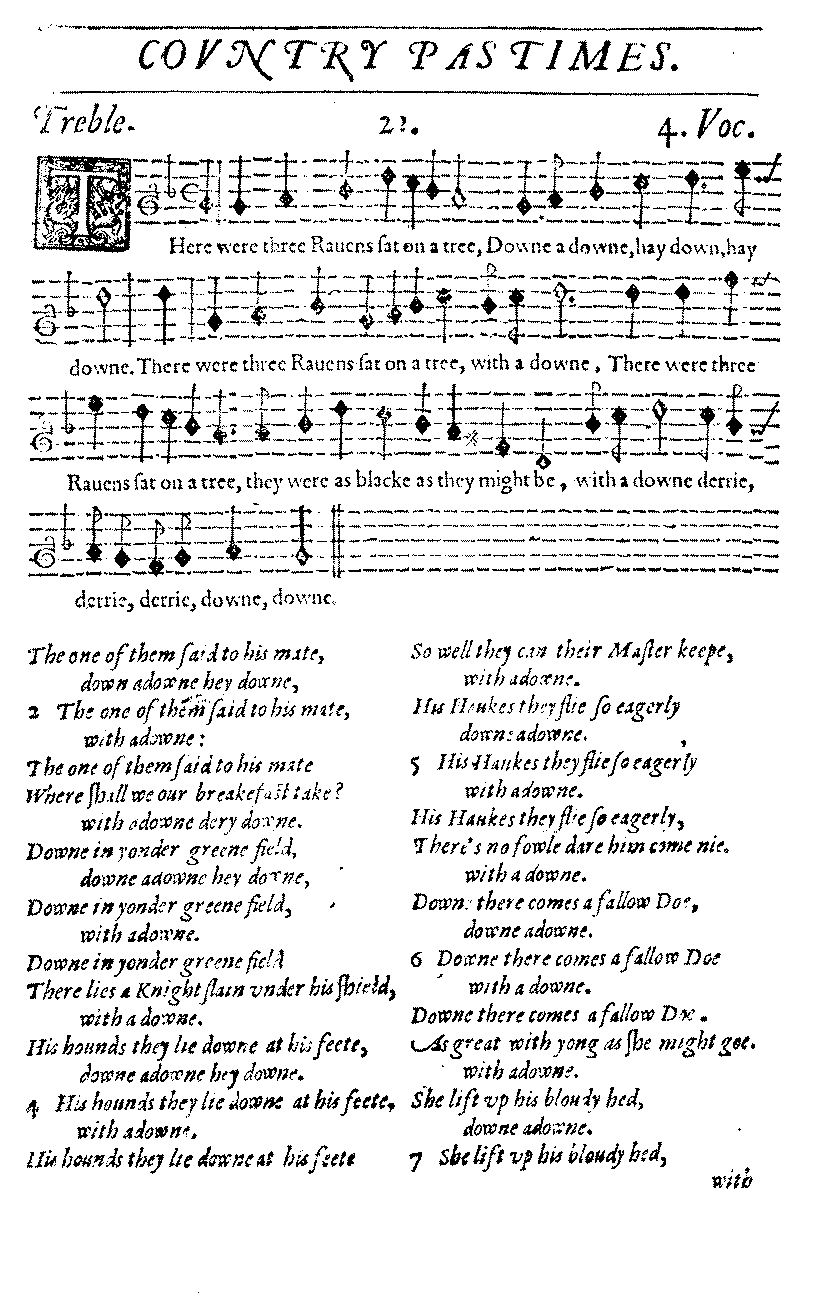The Flute collection contains two songs that help illustrate the fascinating phenomenon of the folk process: The Three Ravens and The Crow Song. Taking a deeper look at the origins of these songs also allows us to make note of some of Ken Guilmartin‘s forebears in collecting and popularizing folk music and creating new compositions that suit the times.
The Three Ravens is a very old English language song. It appears in a 1611 collection by Thomas Ravenscroft (who is responsible for bringing us Hey, Ho, Nobody Home), who, like Ken Guilmartin, both collected and notated existing songs as well as writing new compositions.

In this early form, the story goes that the three ravens are conversing about the possibility of dining for breakfast on the body of a slain knight. Though enticing at first, the ravens notice that the body of the knight is guarded by hawks, hounds and the knight’s lover. The song ends with a blessing, that each of us might have such noble guardians.
The Three Ravens is also included in the important 19th-century collection of English-language music known as the Child Ballads as No. 26. Francis James Child, like Ravenscroft before him, collected and compiled the music that was being sung by people in the towns, villages and countrysides. He notated and categorized music that was being made without notation or category, for the most part, and in this way, is an important link in connecting music of the present day to music of the past.
The version known as Twa Corbies probably comes later, and is in Scottish dialect. The story begins the same, but has a different character. You can read more at the Wikipedia page.
We see many songs in the United States that have similarities to songs from the British Isles, but that are also markedly different, as the influences of African and First Nations musics were intertwined with the European forms. Case in pont: Poor Old Crow, which is included in the seminal collection American Folk Songs for Children (Doubleday, 1948) by Ruth Crawford Seeger, who, as a collector and archivist of folk music, composer in her own right of music quite modern in its time, and mother of Mike and Peggy Seeger and the step-mother of Pete Seeger, was a hugely influential person in the music of the United States. She worked closely with John and Alan Lomax (whose collection American Ballads and Folk Songs is a staple of US historical repertoire) and the Library of Congress to collect folk music of the United States and make it available to the wider public.

Poor Old Crow, collected in Virginia, is the basis for The Crow Song in the Flute collection. The lyrics echo the first stanza of The Three Ravens, with a clearly more ‘American’ form and melody. The recording by Seeger’s daughter Peggy portrays the 3rds (E’s) as more ‘blue’ than the MT recording, which renders them squarely in the mixolydian tonality.
I have led this American version in community contexts, and I enjoy singing it. I was, however, once approached with the concern that the reference to ‘Poor Old Crow, just as black as a crow can be,’ is racist. This concern was raised by a white person, and not by a person of color who had experienced the song in a way that they found hurtful. As a person of mixed racial heritage myself, I was careful to listen and validate the person’s concern, without sharing, in the moment, the connection to the older version of the song. I could see how the song could be presented in a tone and context that could be derogatory, and that it could also be presented in a context that was free from any negative connotations. I don’t see any hard-and-fast reason to exclude it from anyone’s repertoire, as long as it is presented with an open heart and good will. A little bit of history helps, too.